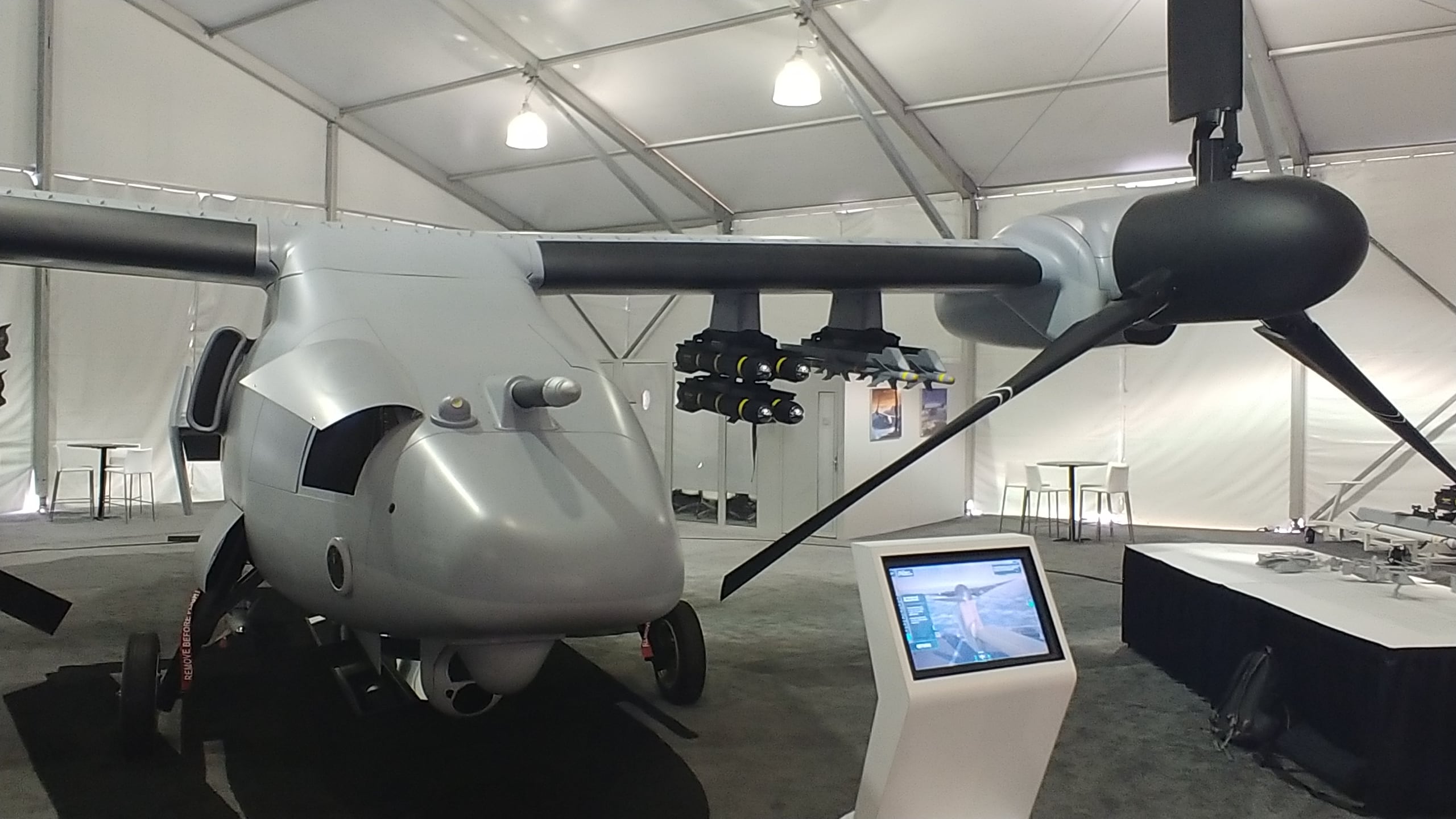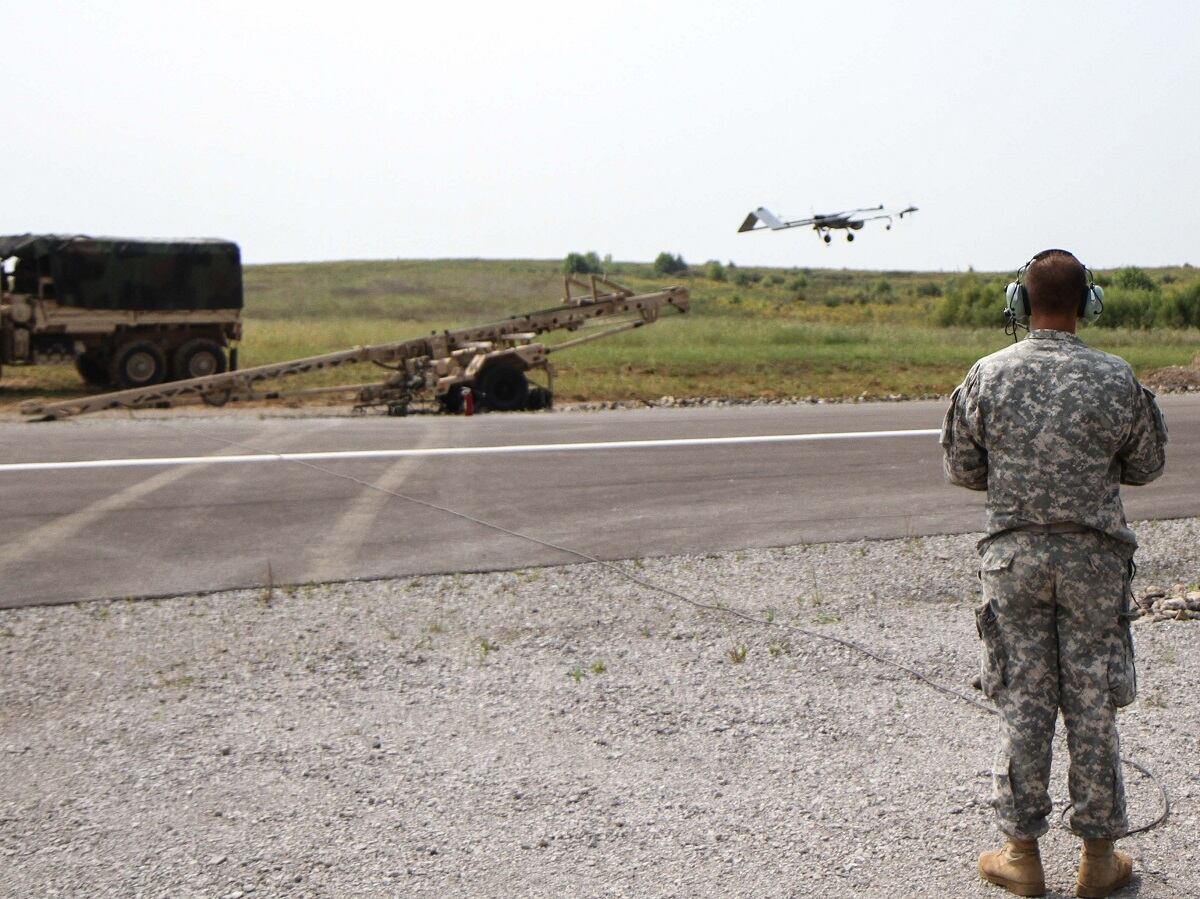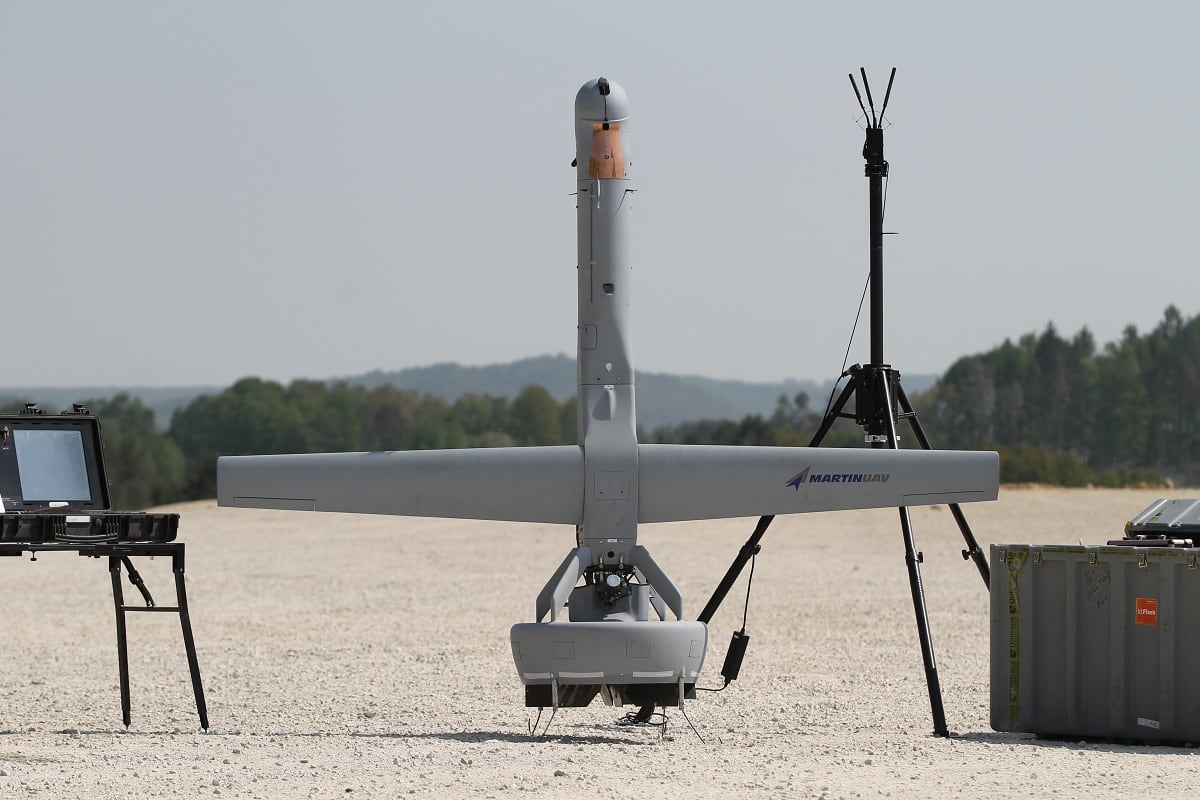NASHVILLE, Tenn. — The U.S. Army will rapidly develop and refine concepts for air-launched unmanned aircraft through a series of demonstrations over the next several years with plans for quick integration into formations, the acting director of the U.S. Army Combat Capabilities Development Command’s Aviation & Missile Center’s Aviation Development Directorate told Defense News.
As part of an effort to refine an advanced manned-unmanned teaming for aircraft, the service has lined up a series of demonstrations to develop the capability of launching unmanned aircraft from larger manned or unmanned aircraft, Layne Merritt said in an interview at the Army Aviation Association of America’s annual summit.
RELATED

The Army’s vision for the future fight is to have a mix of manned and unmanned aircraft in teams assigned to perform a variety of missions. Today’s drones are limited to mostly reconnaissance and surveillance missions and, in some cases, Hellfire missiles can be launched from them, but the service will greatly expand the role of UAS, to include long-range targeting, attack, as decoys to either take a missile of its track or fool the enemy, to carry gear, as electronic warfare weapons, and for resupply and casualty evacuation, Merritt said.
The Army envisions two main categories of air-launched effects: slow loitering UAS as well as fast, long-range versions.
Merritt’s shop partners with requirements writers and the battle lab at Fort Rucker, Alabama, to identify what’s available to help develop the advanced teaming concept, as well as to figure out how best to spend science and technology funds.
But when it comes to air-launched effects — or ALE — there’s nothing commercially available. So for Merritt, the effort presents an opportunity to drive industry development rather than the other way around.
“This is a new class of weapon system,” he said.
“The cool thing about the air-launched effects is that now, instead of standoff jamming or standoff effects, we can have stand-in effects,” he added. “Instead of being 100 kilometers away … we may be 100 meters away, and that’s going to change the type of payloads, but also may be more effective.”
RELATED

In August 2018, the Army demonstrated the ability to launch an unmanned system — ALTIUS (the Air-Launched, Tube-Integrated Unmanned System) — from a UH-60 Black Hawk helicopter, which helped the service understand what is required to launch from a rotary-wing platform.
The Army plans to once again demonstrate the concept during a ground robotic breach exercise at Yakima Air Base in Washington state next month.
But this fall, the Army will take it a step further and launch a UAS from a Black Hawk flying at a lower altitude — roughly 100 feet or less — Merritt said.
“We had to do it at high-altitude first so we could understand the separation characteristics of the platform and how we had to change for that,” Merritt said. “For example, most of the little UAS, the wings are stowed and they have a big spring and they pop open really fast, but if you are going to be launching under a rotor system, you don’t want this thing to be flying too soon.”
The spring in the Army’s test UAS can be controlled, he added, so it safely separates but flies before it falls to the ground.
The demonstrations help the Army understand how to design the vehicles, how to control the launch, from which direction it should launch the aircraft, and what kinds of maneuvering restrictions must be placed on the launch vehicle and on the unmanned aircraft, Merritt said.
Once the service executes a low-altitude launch demo, it will experiment with different payloads, Merritt said. Depending on what is successful, “the Army could make a decision to spin that off and launch those for a reconnaissance surveillance mission," he added.
Over the course of three or four years, he noted, “we will have advanced and integrated several different payloads, and then we can really start filling in this new operational concept.”
At the end of fiscal 2020, Merritt said, the Army will conduct demonstrations of an unmanned “mothership” using multiple air-launched effects for a reconnaissance, surveillance and target acquisition (RSTA) role.
That would be followed an autonomous RSTA and attack demonstration in FY21 using not only ALE but also large UAS under GPS-denied environments, he added.
In later years — likely FY22 — the Army will include decoys and electronic warfare capabilities in more stressing environments, Merritt said.
Then in FY23, “we will be able to demonstrate breaching an integrated air defense system because we will have all the elements required to do that,” he said, as it will be critical to have the ability to suppress an enemy’s air defense.
RELATED

Any time along the way, Merritt said, “if there is something that is militarily suitable, I think we will have a limited-user fielding within a year.”
There are already good optical sensors available in optimal form factors, Merritt said, so “launching is the thing we have to get over, and once we can do that, obviously it could be fielded.”
Jen Judson is an award-winning journalist covering land warfare for Defense News. She has also worked for Politico and Inside Defense. She holds a Master of Science degree in journalism from Boston University and a Bachelor of Arts degree from Kenyon College.







